Kitchen Cabinet Materials: What the Pros Won’t Tell You (But We Will)
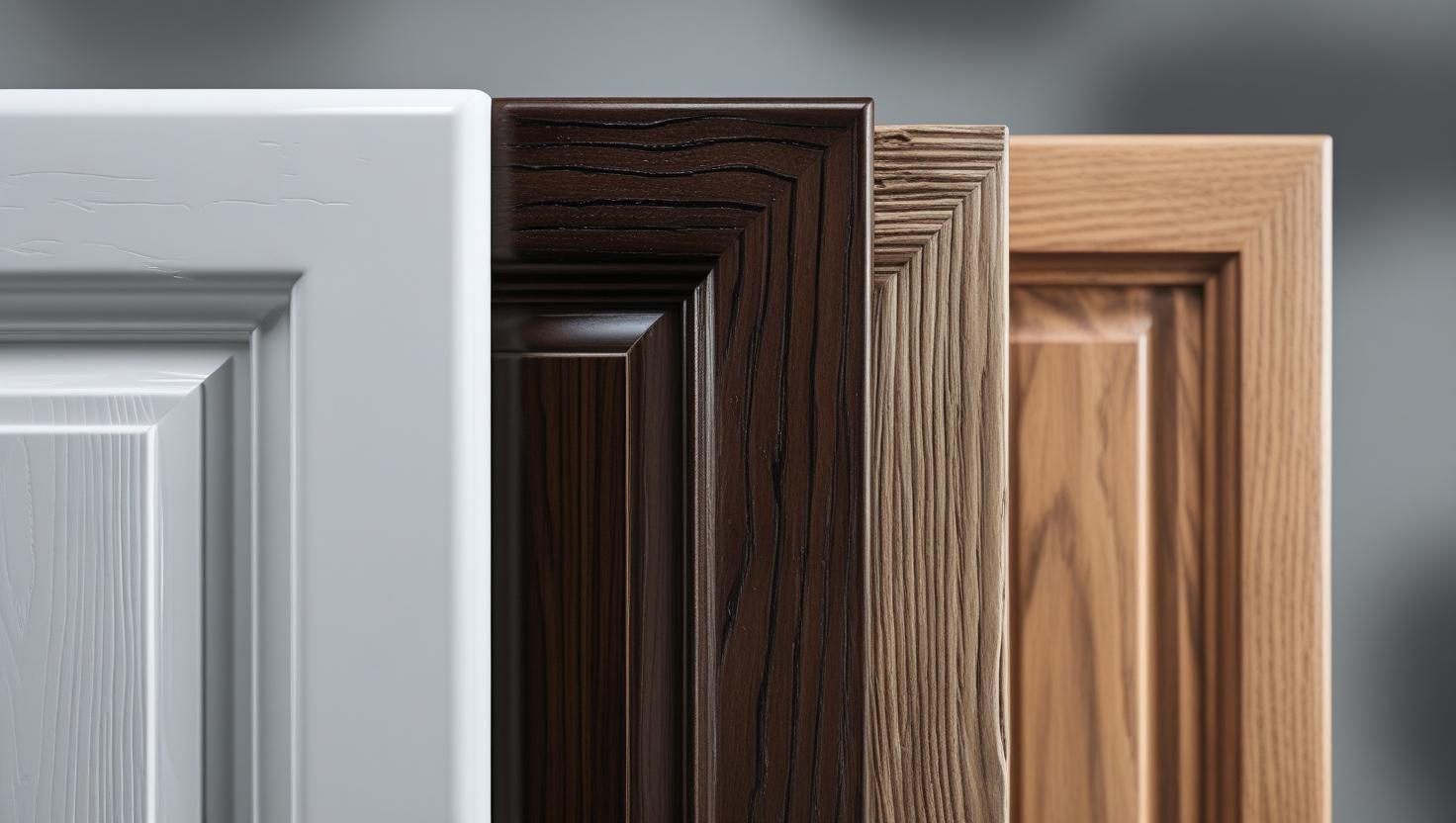
Let’s be real—picking the right kitchen cabinet materials can feel like a total headache. The market is filled with so many cabinet materials. And, on top of that, everyone from your neighbor to your contractor has a different opinion. Some say to choose solid wood, or don’t change at all. While others do a complete 180. Meanwhile, you just want a kitchen that looks amazing and feels like a home. Well, let’s say, you’re in luck! Because we’re going to break down the best materials for kitchen cabinets, whether you’re just browsing or actually building something new.
So, scroll down for honest info, real pros and cons, and a few insider tips that can save you time and money.
First Things First: Why Kitchen Cabinet Materials Matter (Like, A Lot)?
Your cabinets aren’t just boxes with doors. It’s fair to say that they take up the most space in your kitchen, and they get the most use, too. From storing items to serving looks, kitchen cabinet materials have to hold up. The material you choose for your cabinets will impact literally everything.
From durability and maintenance requirements to cost and overall look, you need to consider everything. Imagine a high-end-looking cabinet but with a small lifespan. Useless? Exactly our point! So yes, it matters a lot.
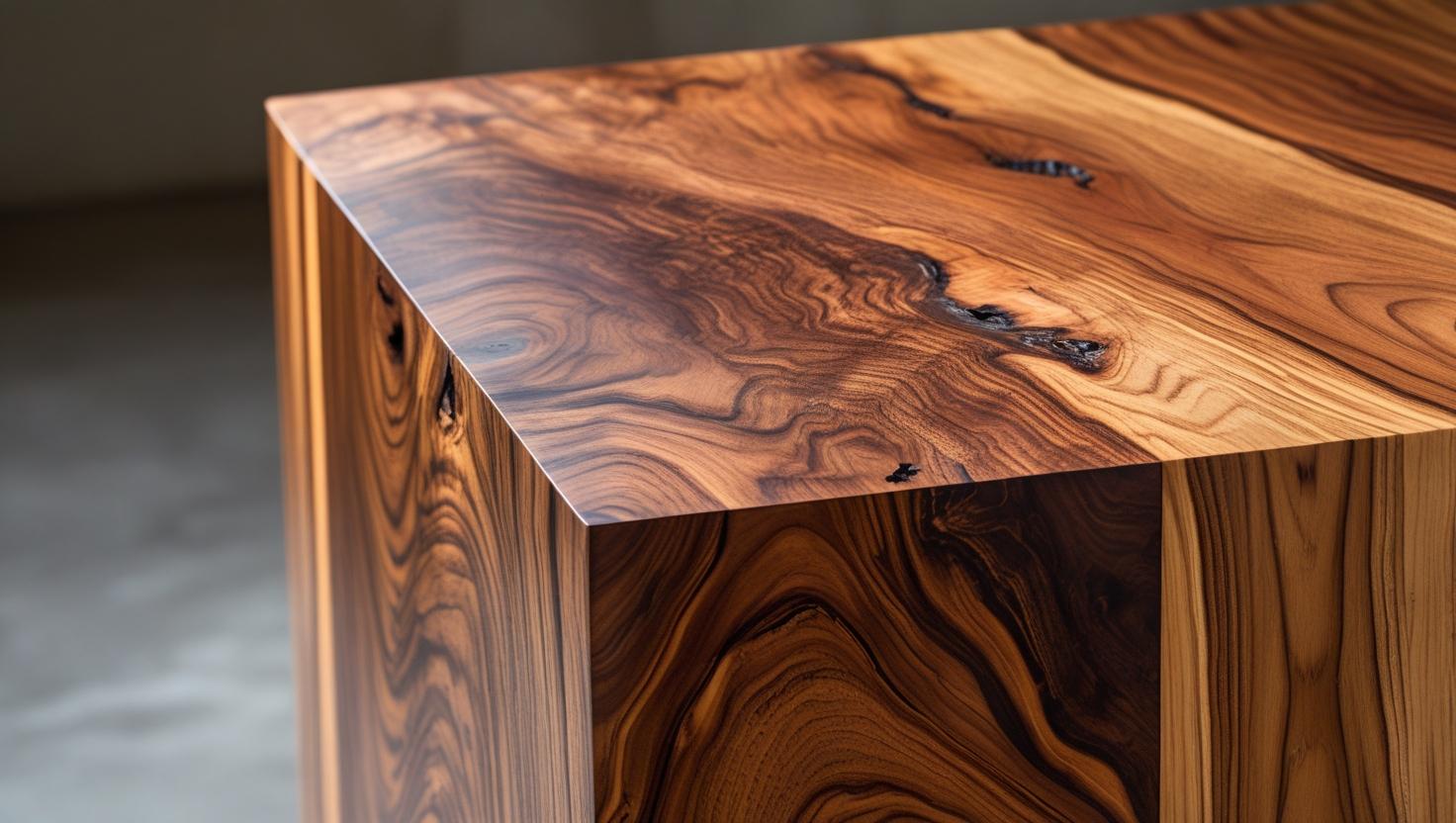
1. Solid Wood: Timeless, Tough, and Totally Gorgeous
Solid wood is one of the best cabinet materials and is quite popular nowadays. And doubtless to say, it is known for its classic appeal, durability, and natural beauty.
If budget isn’t your top concern and you prefer a natural, warm appeal, this premium wood is for you.
The best wood types for cabinets include maple, cherry, oak, and walnut. Overwhelmed with the wood types? Just use this code language:
- Maple is smooth-grained. Which makes it ideal for paint or stain.
- Cherry is rich in color and deepens over time like a vibrant flower.
- Oak is super strong. Its built-in grain serves looks with practicality.
- Walnut is the blend of luxury vibes and a dark, sleek finish.
Benefits:
- Strong and long-lasting.
- Unique, natural appearance.
- Can be refinished or restrained.
- Customizable and works well with most styles.
Limitations:
- It’s pricey, which means you need a good budget.
- Needs proper sealing to avoid humidity-induced warping.
- High maintenance.
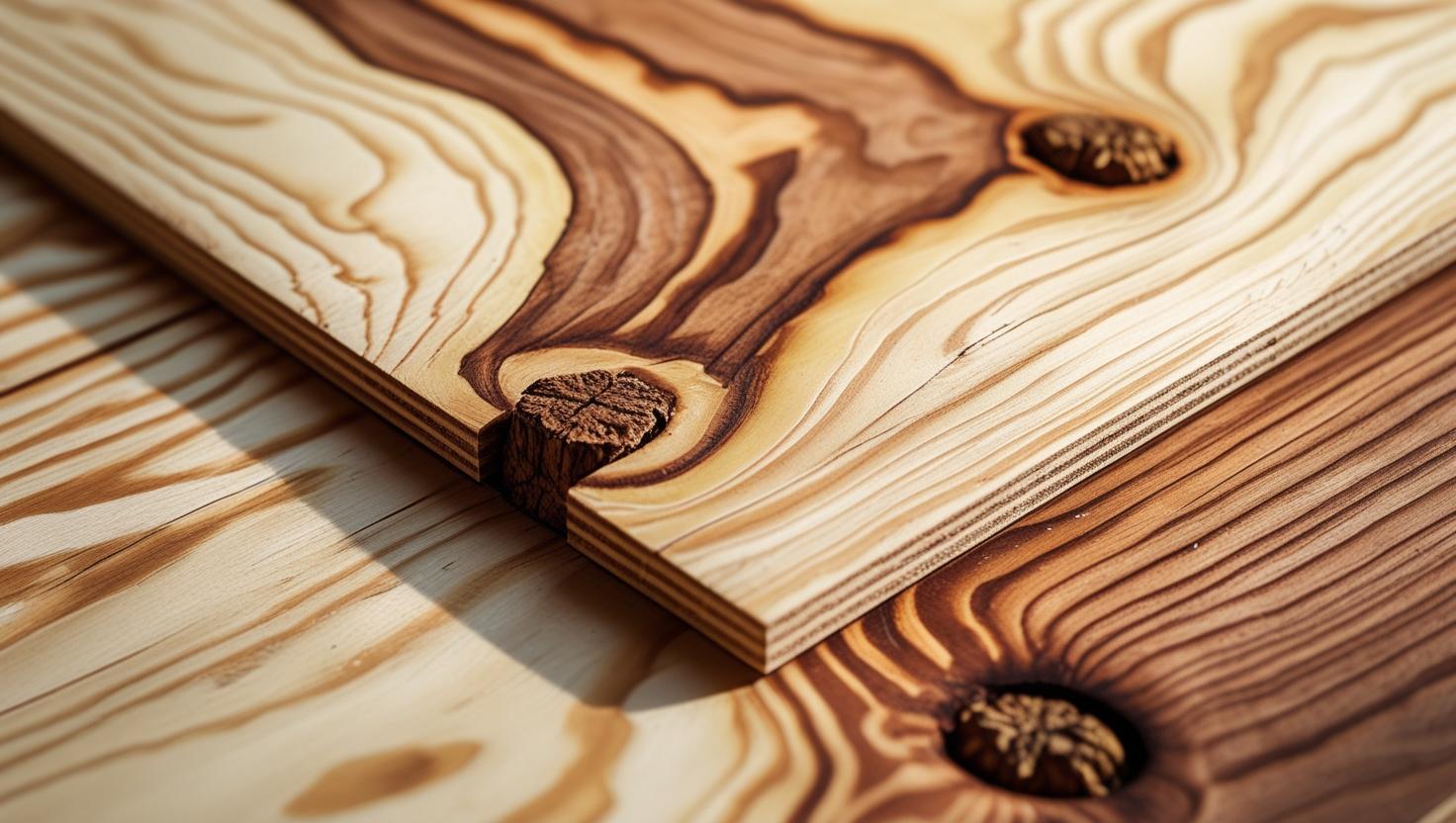
2. Plywood: The Workhorse of High-End Cabinets
Don’t let the word “plywood” fool you—it’s not cheap junk. In fact, most high-end kitchen cabinet materials use plywood as the core.
Made by layering sheets of wood veneer, this super sturdy material is ideal for creating cabinet boxes and shelves. The plus point here is that it serves well, but without the solid wood price tag.
Benefits:
- It is lightweight but tough enough to handle wear & tear.
- Less prone to warping & sagging than solid wood.
- It offers efficient moisture resistance.
- Offers durability but without the extra cost of solid wood.
Limitations:
- Prone to moisture damage if not properly sealed.
- More expensive than engineered wood options.
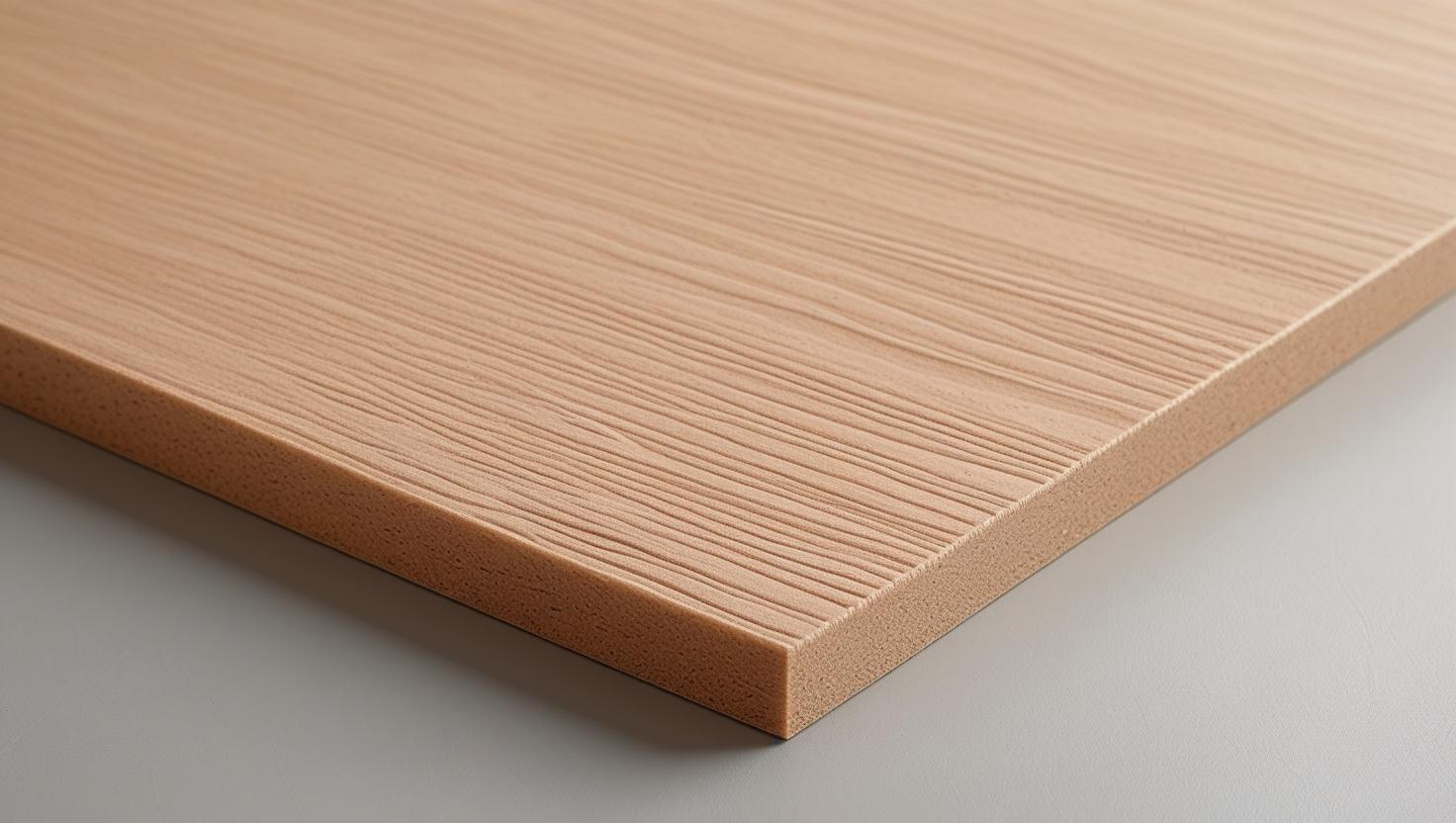
3. MDF (Medium-Density Fiberboard): Sleek, Smooth, and Budget-Smart
MDF has come a long way. Medium-density fiberboard (MDF), an engineered wood product, is made of wood fibres and resin. Its super smooth finish makes it one of the ideal cabinet material options.
What’s more appealing is that it’s highly customizable, thanks to its ease of cutting and shaping.
Benefits:
- Its surface is perfectly smooth, ideal for painting.
- Its easy cutting and shaping make it highly customizable.
- More affordable than solid wood
- Doesn’t expand and contract like real wood
Limitations:
- Not water-friendly—easily gets damaged if exposed to water.
- Heavier than plywood.
- Its installation is quite challenging.
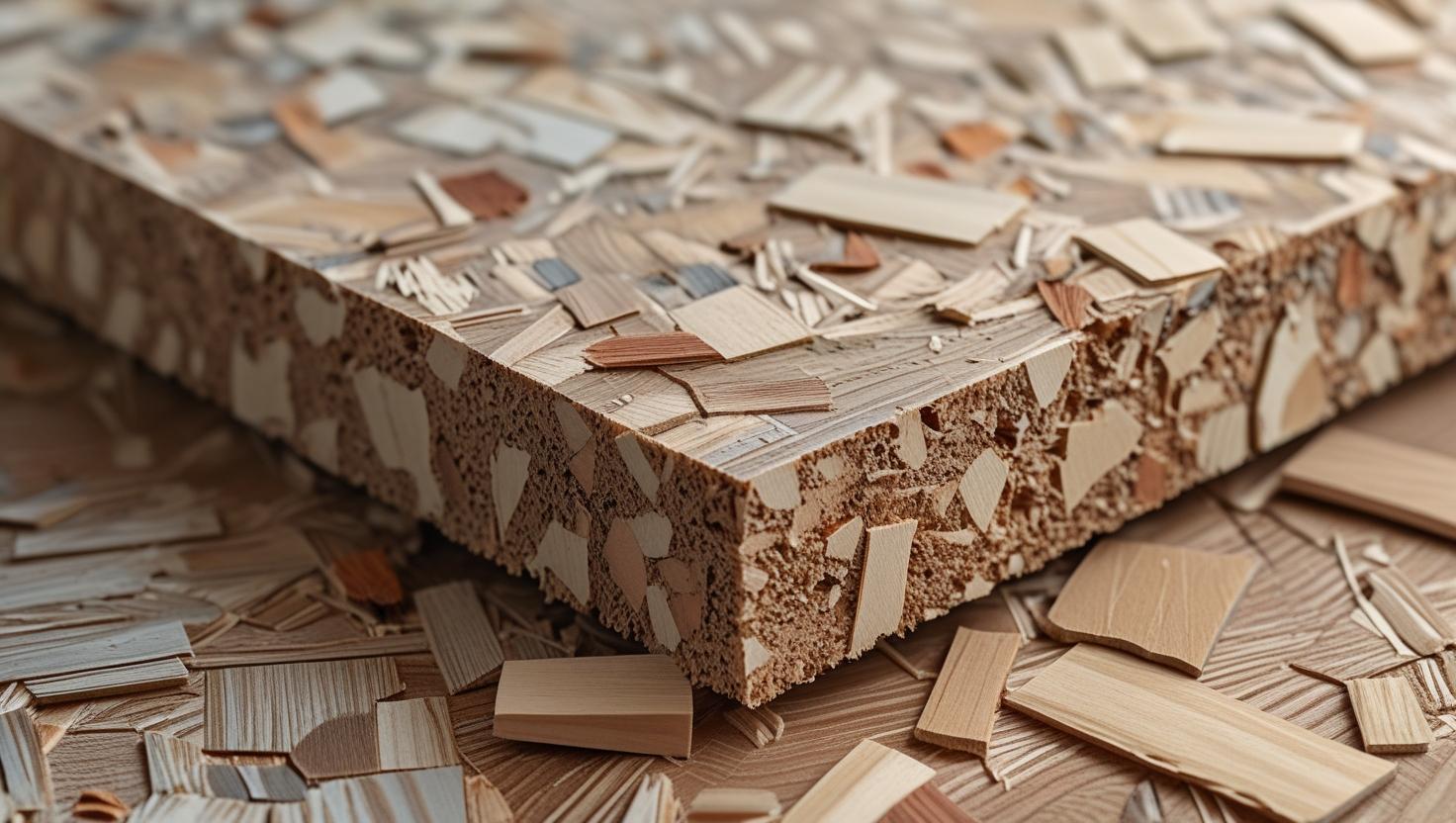
4. Particleboard: The Budget Option with Limits
Let’s not sugarcoat this one—particleboard is what you go for when cost is the top priority. This is made by compressing wood chips and resin into sheets, making it an ideal alternative for plywood or solid wood.
Other than being budget-friendly, it’s eco-friendly and easy to shape. This makes it ideal for customization according to your requirements.
Benefits:
- Super affordable material
- Easy installation
- Lightweight and eco-friendly
- Good for temporary or rental kitchens
Limitations:
- Highly prone to water-induced damage.
- Shorter lifespan—so won’t last long.
- Susceptible to scratches or dents.
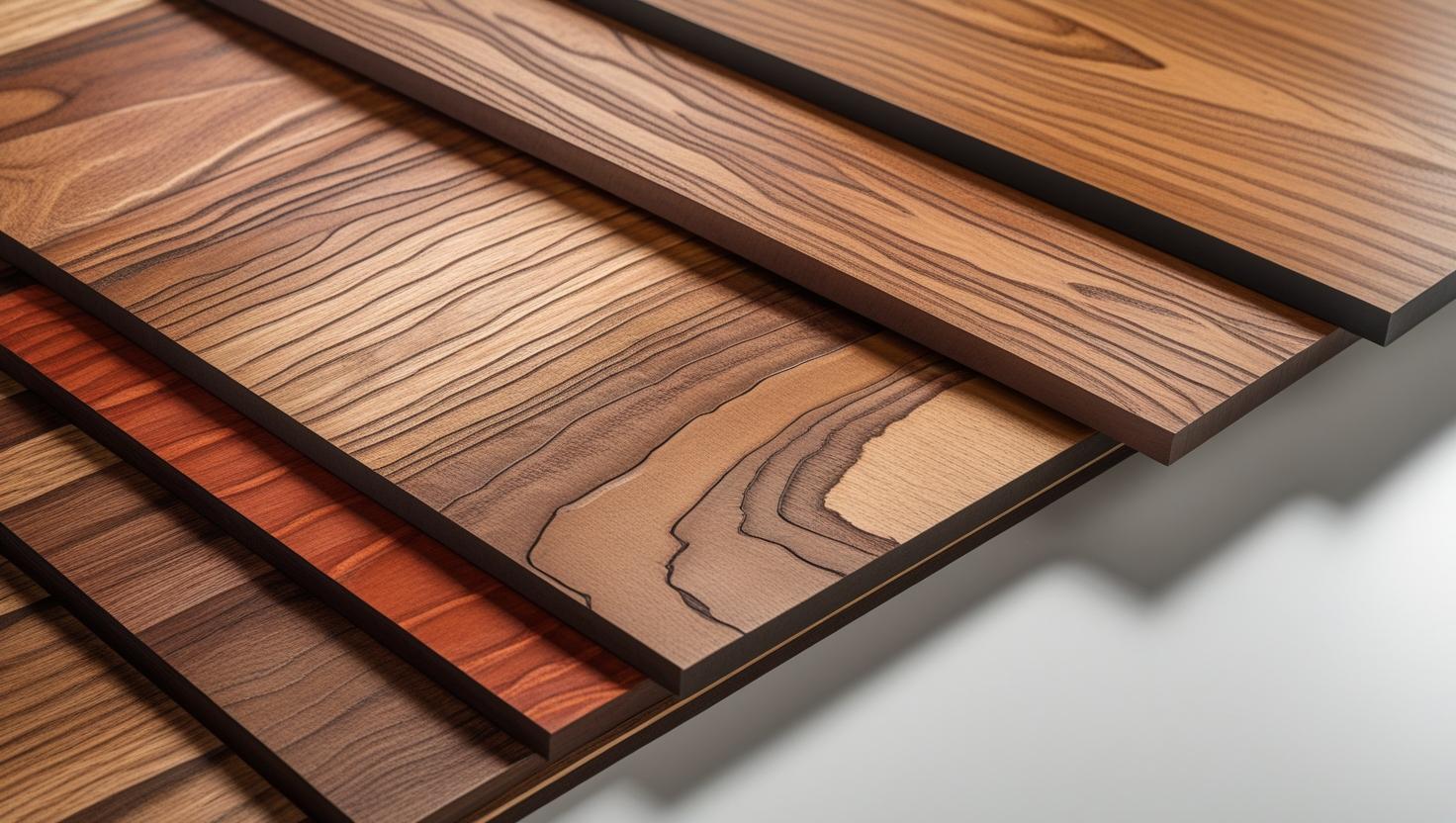
5. Veneers: Real Wood Vibes Without the Heavy Price
Love a natural wood finish but with the high price tag of solid wood? Wood veneers give you that gorgeous natural grain by blending a thin layer of real wood with a substrate like MDF.
And you know what’s the best part? They can replicate various wood types, making them versatile and affordable.
So, choose this material in case you plan to hit the sweet spot between beauty and budget.
Benefits:
- Versatile appearance than other kitchen cabinet materials.
- A budget-friendly option for solid wood lovers.
- Sustainable—uses less wood overall.
- Lightweight material with a stable base.
Limitations:
- Needs careful handling, otherwise it can peel easily.
- Repairing is not as easy as with solid wood.
- Highly sensitive to moisture-induced damage.
6. Thermofoil: Clean, Glossy, and Easy to Love
This material literally leaves everyone in awe with its contemporary finish. As if that wasn’t enough, it fits well within most budgets.
These cabinets are created by applying a thin layer of vinyl over MDF using heat. As a result, you get a smooth finish that looks just like painted wood.
Benefits:
- Easy maintenance—just wipe and go.
- Moisture resistant to some extent.
- Polished appearance and affordable price.
- Available in various colors and finishes.
Limitations:
- Can peel over time, especially near heat sources.
- Hard to repair if damaged.
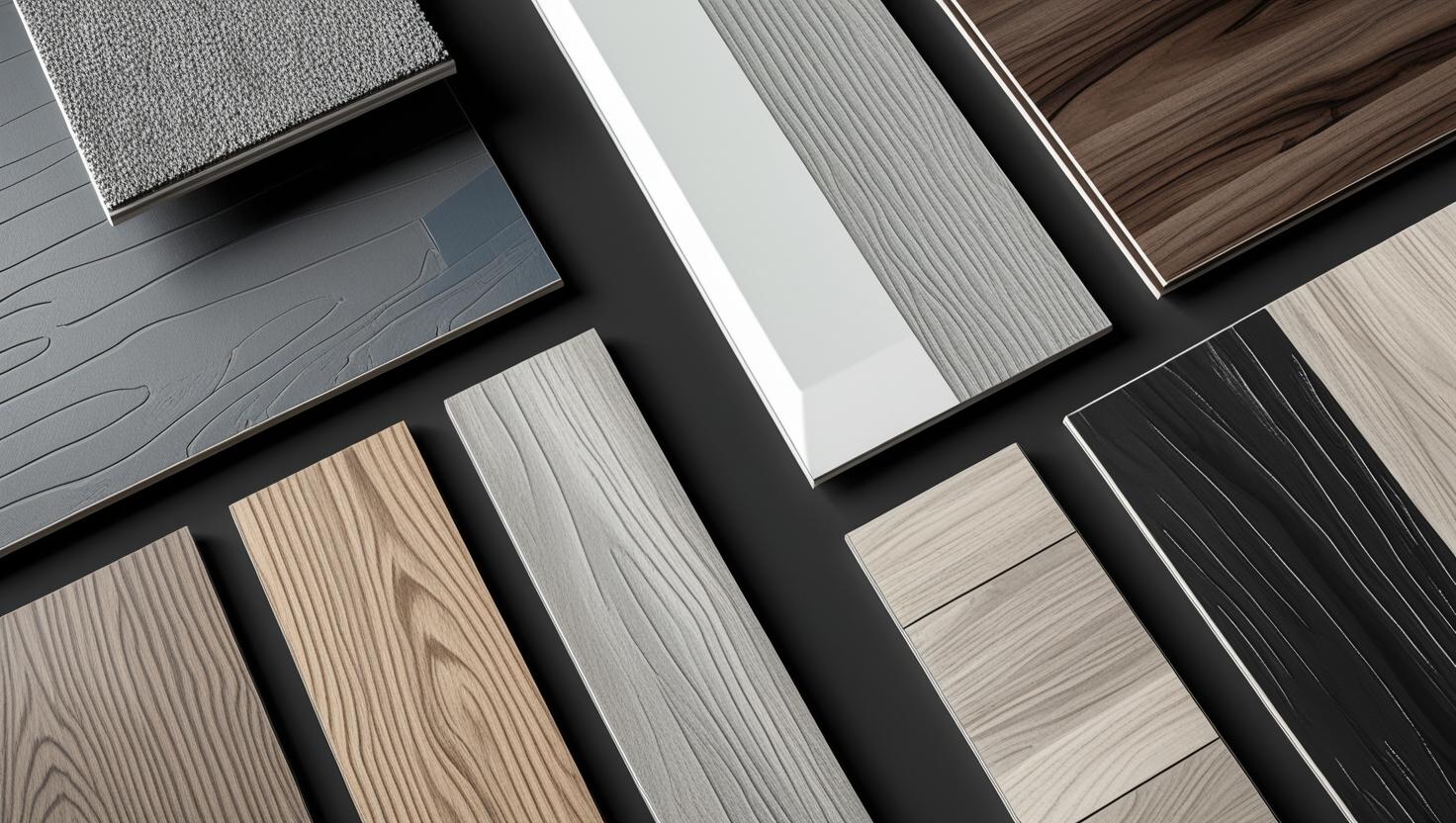
7. Laminate: Modern Looks with Tough Durability
By best kitchen material, we mean durable cabinets that suit your space and budget. And to say this material is all about modern style and long-lasting performance.
These cabinets are made by layering resin-coated paper onto a core of particleboard or MDF, using heat or high pressure.
Benefits:
- Extremely durable cabinet material.
- Budget-friendly design choices.
- Offers a low-maintenance wood look finish
- Stain and moisture-resistant options.
Limitations:
- Excessive heat can damage its finish.
- It cannot be repaired easily once damaged.
The Real Question: What’s the Best Kitchen Cabinet Material for You?
Wish it were that easy, right? But the truth is, choosing the right kitchen cabinet material really depends on what your life looks like—your habits, your home, your budget, even how often you cook (or don’t!). Some folks need something heavy-duty and practical, others are after that sleek designer look, and some want a little bit of both. So, let’s cut to the chase and help you find your match among other kitchen cabinet materials.
| Preference | Choose |
|---|---|
| Timeless durability & natural appearance | Solid wood |
| Lightweight & moisture resistant | Plywood |
| Smooth, painted, budget-smart finish | Medium-density fiberboard (MDF) |
| Stylish and super affordable | Particleboard |
| Modern, low maintenance, stain-resistant | Laminate |
| Versatile, polished appearance | Thermofoil |
Final Thoughts
As a matter of fact, the kitchen is not just a place to cook. Rather, it’s a creative space. That’s where you begin your morning. And that’s the same place where you make unlimited memories. Ain’t it? In our view, when you choose your kitchen cabinet materials, you’re choosing how your kitchen lives and breathes. As can be seen, we told you everything you need to know before selecting the one that resonates with you. So, take your time and prioritize your personal taste to renovate your dream space.
Frequently Asked Questions (FAQs)
What are the trending kitchen cabinet materials?
Right now, it’s all about clean lines, natural textures, and low-maintenance finishes. People are loving:
- Painted MDF – Smooth, sleek, and perfect for bold or classic colors.
- Wood veneers – Real wood look without the full cost of solid wood.
- Textured laminates – Super durable and surprisingly stylish these days.
- Plywood boxes – Strong and reliable, often paired with painted or veneer doors.
- Two-tone combos – Like white uppers and woodgrain lowers—total eye candy.
What is the best kitchen cabinet material?
There’s no one-size-fits-all answer—it depends on how you live. That said:
- Plywood is a top pick for strength.
- MDF gives a flawless painted finish.
- Solid wood brings natural beauty and richness.
- Laminates are great for easy cleaning and busy homes.
Want the best of all worlds? Go for plywood cabinets with MDF or veneer doors.
Which material is most durable for kitchen cabinets?
Plywood takes the win for toughness as it holds up to wear, moisture, and heavy use.
No doubt, solid wood is strong too, but it can warp in humidity.
Where can I find the best kitchen cabinet material?
If you’re looking for the best variety of kitchen cabinet materials, go for Trendy Cabinets. They are providing premium quality in various colors, brands, and styles. Also, you can find durable material options at an affordable price

Our Showroom is Open
4401 Shallowford Rd Ste 156, Roswell, GA 30075
+1 678 900 4575

100% Satisfaction Guarantee
With 5.0 stars our happy customers agree our
services are excellent.

For Every Budget
We offer free design service and kitchen and bath cabinets
for every budget.
Let's bring your kitchen dreams to life
Meet your designer in-store or online to chat through your options and start creating your dream kitchen, your way.
